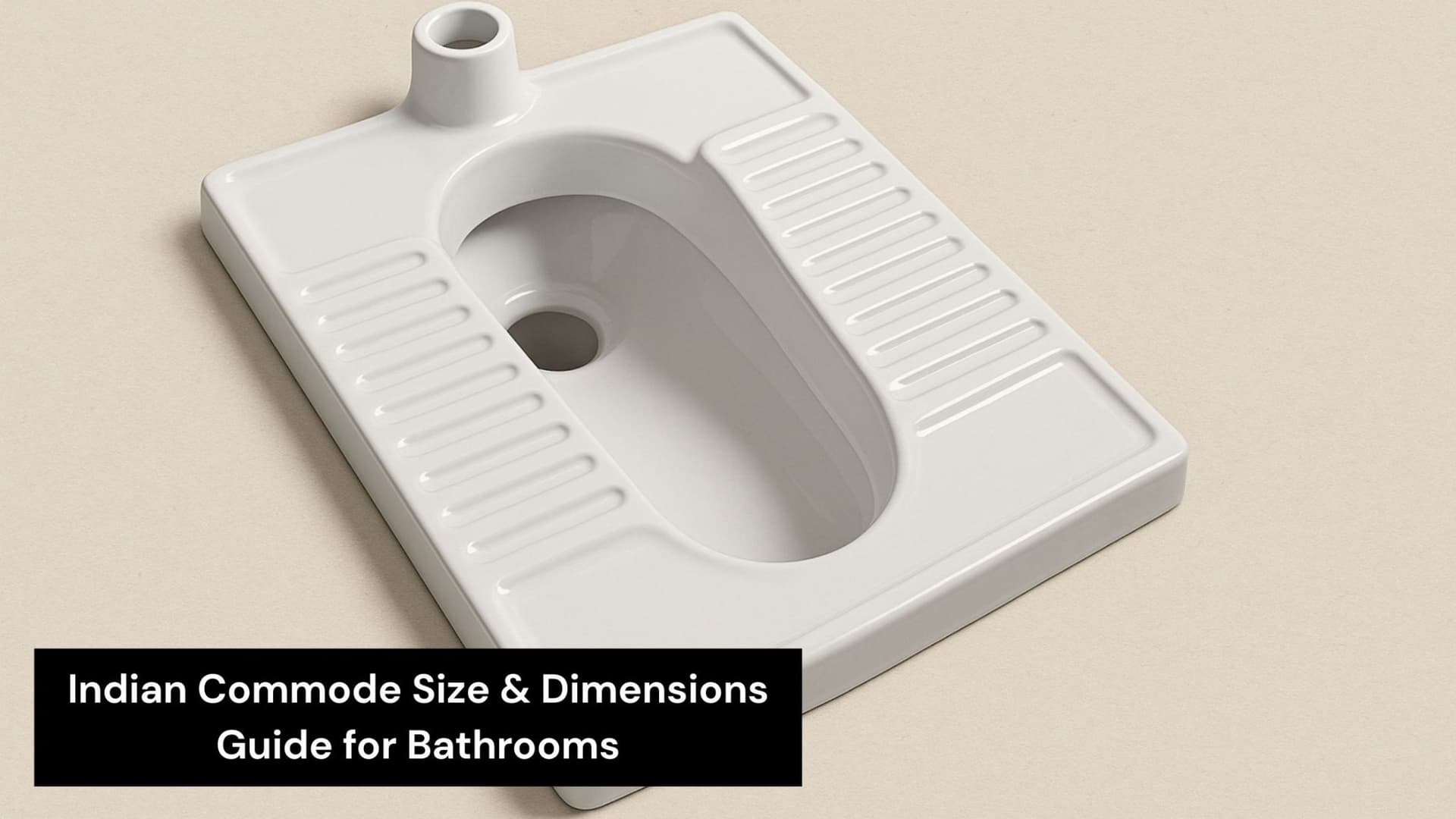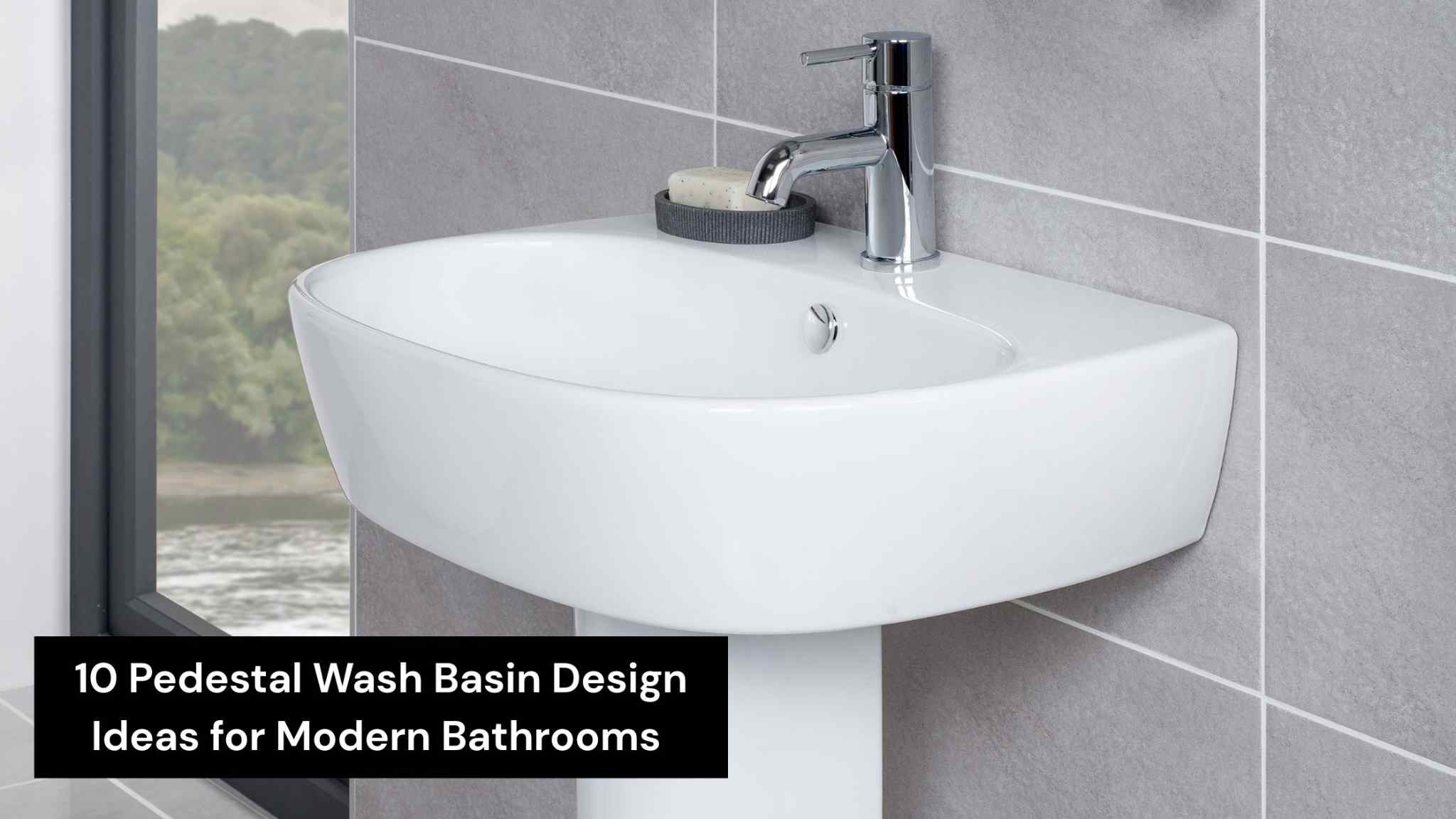Flush Valve vs Flush Tank - Which Is Better for Your Bathroom

A well-designed bathroom isn’t just about stylish tiles or modern fittings, but also about choosing the right flush system. Many homeowners overlook this detail until they face issues like weak flushing, water wastage, or inconsistent pressure. The choice between a flush valve and a flush tank can significantly influence water efficiency, hygiene, and even the overall look of your bathroom. While flush tanks have long been the traditional option, flush valves are becoming popular for their sleek design and powerful performance.
Read further to compare flush valve vs flush tank systems to help decide which one suits your bathroom’s design, plumbing setup, and daily needs best.
What Is a Flush Tank?
A flush tank is a water storage unit, usually mounted on the wall or concealed within it, that releases water into the toilet bowl when the flush lever is pressed. The stored water creates sufficient pressure to remove waste efficiently.
These are widely used in homes due to their affordability, easy availability, and compatibility with most toilet models, including standard EWC units.A flush tank toilet is ideal for low-pressure water supply systems and offers a quiet operation compared to direct valves.
What Is a Flush Valve?
A flush valve is a direct flushing mechanism that releases water at high pressure straight from the supply line instead of a tank. Usually made of brass or stainless steel, it delivers a powerful flush with minimal water usage.
Commonly found in hotels, airports, and commercial restrooms, a flush valve toilet offers modern design, faster operation, and enhanced hygiene, but requires good water pressure for optimal performance.
Related Post : Tankless Toilet & Water Closet Designs for Indian Bathrooms
Difference Between Flush Tank and Flush Valve
|
Features |
Flush Tank |
Flush Valve |
|
Design |
Water is stored in a tank before flushing |
Direct flush system connected to the supply line |
|
Water Pressure Source |
Relies on gravity |
Uses direct water pressure |
|
Flush Mechanism |
Releases water from the tank |
Activates a valve for instant flow |
|
Water Efficiency |
Moderate, depends on tank size |
Highly efficient, less water wastage |
|
Noise Level |
Quieter operation |
Slightly louder due to direct pressure |
|
Maintenance |
Easier and low-cost |
Requires professional maintenance |
|
Durability |
Moderate (plastic or ceramic) |
High (metal construction) |
|
Ideal For |
Homes and low-pressure areas |
Commercial spaces and modern bathrooms |
|
Cost |
Generally affordable |
Slightly higher initial cost |
In summary, the difference between a flush tank and a flush valve lies in how they use water pressure and design to achieve flushing efficiency. Flush valves are sleek and modern, while flush tanks remain dependable and cost-effective.
Which Flush System is Best for Your Bathroom?
The right choice depends on your bathroom’s infrastructure and daily usage:
- Small or residential bathrooms: Opt for a flush tank system if your area has inconsistent water pressure.
- Modern or high-traffic bathrooms: Choose a flush valve system for quick, powerful, and efficient performance.
- For aesthetic upgrades: Go for concealed flush tanks or wall-hung toilets to complement your bathroom design.
Related Post :Concealed Flush Tank Size Guide for Modern Indian Homes
Maintenance Tips for Flush Tanks and Flush Valves
Proper upkeep ensures durability and hygiene.
For Flush Tanks:
- Clean tank interiors every 3–6 months to prevent scaling.
- Replace worn-out washers or inlet valves promptly.
- Check for water leakage around cistern fittings.
For Flush Valves:
- Regularly inspect for mineral buildup in the valve body.
- Use high-quality seals to prevent drips.
- Get professional servicing annually for smooth function.
Regular flush tank maintenance and flush valve maintenance not only prevent leakage but also extend the lifespan of your fixtures.
Environmental Impact: Water Efficiency of Flush Tanks and Flush Valves
In terms of water efficiency, flush valves consume less water per flush compared to conventional tanks, thanks to controlled flow and direct pressure.
A typical flush tank uses 6 to 10 litres per flush, while a modern flush valve may use just 3 to 4 litres, varying depending on the model.
For eco-conscious homeowners, installing dual-flush systems or water-efficient plumbing fixtures, like Simpolo Tiles and Bathware’s premium range of cisterns and bathware solutions, can help reduce overall consumption and support sustainable bathroom design trends.
Related Post : Types of Flush Tank & Cistern Tank Sizes Guide
FAQ About Flush Valve vs Flush Tank
1. Can I replace my flush tank with a flush valve system?
Yes, it’s possible to replace a traditional flush tank with a modern flush valve system. However, this depends on your bathroom’s plumbing layout and available water pressure. Flush valves require strong, consistent water flow. It’s best to consult a professional plumber to ensure compatibility and proper installation.
2. Which flush system is quieter in operation?
A flush tank system operates more quietly since it uses stored water released gently through gravity. In contrast, a flush valve system relies on direct pressure, creating a noticeable sound when activated. For noise-sensitive environments like homes or small bathrooms, flush tanks offer a more peaceful experience.
3. How often should flush valves and flush tanks be serviced?
Both flush valves and flush tanks should be checked and serviced every 6 to 12 months. Regular maintenance helps detect leaks, worn washers, or pressure issues early. Cleaning components and replacing faulty seals improve performance, extend lifespan, and ensure consistent flushing efficiency without water wastage or plumbing damage.
4. Are flush valve toilets more water-efficient than flush tanks?
Yes, flush valve toilets are generally more water-efficient because they use a direct pressure system that releases only the required amount of water per flush. Many modern valves use around 3–4 litres per flush, whereas traditional tanks may consume 6–10 litres. This makes flush valves eco-friendly and cost-effective in the long term.
5. What is the typical lifespan of a flush tank vs a flush valve?
A standard flush tank made of plastic or ceramic lasts about 8–10 years, depending on maintenance and water quality. On the other hand, flush valves, typically made of durable metal like brass or stainless steel, can last around 12 years or more with regular care and proper cleaning routines.
6. Can a flush valve be installed in a residential bathroom?
Yes, a flush valve can be installed in homes, provided your water pressure is adequate. It’s ideal for modern or luxury bathrooms with concealed plumbing. However, since it requires precise alignment and sealing, professional installation is crucial to prevent leaks and ensure smooth, powerful flushing every time.







